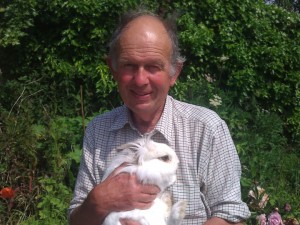 I was brought up in a family of farmers and bloodsports enthusiasts – that is with the exception of my mother who nearly left my father when he returned home from a shooting trip with his car covered in blood. Had she done so I might not have been sitting here now.
I was brought up in a family of farmers and bloodsports enthusiasts – that is with the exception of my mother who nearly left my father when he returned home from a shooting trip with his car covered in blood. Had she done so I might not have been sitting here now.
I have vivid boyhood memories of an incident when a combine harvester was circling a wheat field with my great-uncles stationed around – shot guns at the ready. Within a few yards of the centre a total of fourteen foxes sprang out and every one was shot. There must have been at least two fox families in that field. At that time I thought this slaughter was all jolly good fun and always reminded my uncles of it when I met them. But on another occasion when I attended a rough shoot as a beater an injured hare cried like a human baby, which I’m sure sowed the seeds of my conversion to the “anti” cause in later years, especially regarding hares.
So although I was groomed to follow in the footsteps of my family, it thankfully didn’t work out that way. On attending Exeter University in 1968 to study zoology I came to realise that studying animals offers far more pleasure than killing them. But it wasn’t until attending a presentation by the League Against Cruel Sports on hare coursing in the late 90s that I was galvanised into action for the cause of hare conservation and welfare. The scenes portrayed in that presentation were horrific and I had never seen so many grown men and women in an audience reduced to tears.
I founded the British Brown Hare Preservation Society in 2002 and this eventually became the Hare Preservation Trust. But in 2013 the committee voted against supporting the anti-badger cull campaign, so I resigned to found a new group – South-West Action for Hares (SWAFH). Although focused on hares the group has a guiding principle that it supports other wildlife organisations when the occasion arises, so my first “action” was to sign SWAFH up to Team Badger.
SWAFH has three principal projects at present. It is known that many leverets are killed by farm machinery as they wait in fields of long grass for their mothers to return at dusk to give them their single daily feed, so we are exploring the possibility of detecting them using thermal imaging cameras mounted on drones. This technique has already been successfully used in Denmark to detect roe deer fawns, but leverets would be more difficult to detect owing to their smaller size and lower heat output. There is also the problem of what to do with the leverets if detected. It has been suggested that the mother would find them if they are caged in a field corner and the cage removed just before dusk.
The second project is a campaign to persuade the Scottish Government to confer Protected Species status upon the mountain hare which is relentlessly persecuted by the grouse shooting industry as described in Mark’s blog. There is also the infamous case where a party of Italians brought a refridgerated lorry over here, planning to shoot 1,000 mountain hares to return to Italy to sell to pay for their shooting holiday.
Thirdly, we are exploring the possibility of re-introducing mountain hares to Dartmoor where they died out around 5,000 to 7,000 years ago when the Moor became covered with a deciduous forest which was not good habitat for hares. That situation has now largely reversed and the Moor includes 11,500 hectares of heather moorland. Research in Banffshire has shown that heather accounts for 90% of the winter and half the summer diet of mountain hares. But much more work needs to be done to assess the suitability of Dartmoor for mountain hares and indeed whether they might interact negatively with plant and animal communities already present. They would also need adequate protection. Although they are already protected under the EC Habitats Directive this needs to be enforced far more rigorously. We welcome all views on our projects and can be contacted here: [email protected]
[registration_form]
Thanks, Mark, for giving Rodney the opportunity to tell us about his excellent – and compassionate – work.
Very interesting and thought provoking blog. Not so sure about introducing hares to Dartmoor but certainly something to reflect upon.
I agree AC – should a species that became extinct locally due to natural processes be reintroduced into a degraded landscape that is only suitable again because of the actions of man?
An interesting idea using drones carrying thermal cameras to locate leverets so they can be avoided by farm machinery. Two possible issues spring to mind: the difficulty of persuading farmers to adopt such an approach on a wide scale and secondly the likelihood of predators such as crows quickly learning that little un-mowed islands hide a tasty treat. These may not be insuperable though and the idea is surely worth pursuing further.
Thanks Rodney and Mark, very interesting.